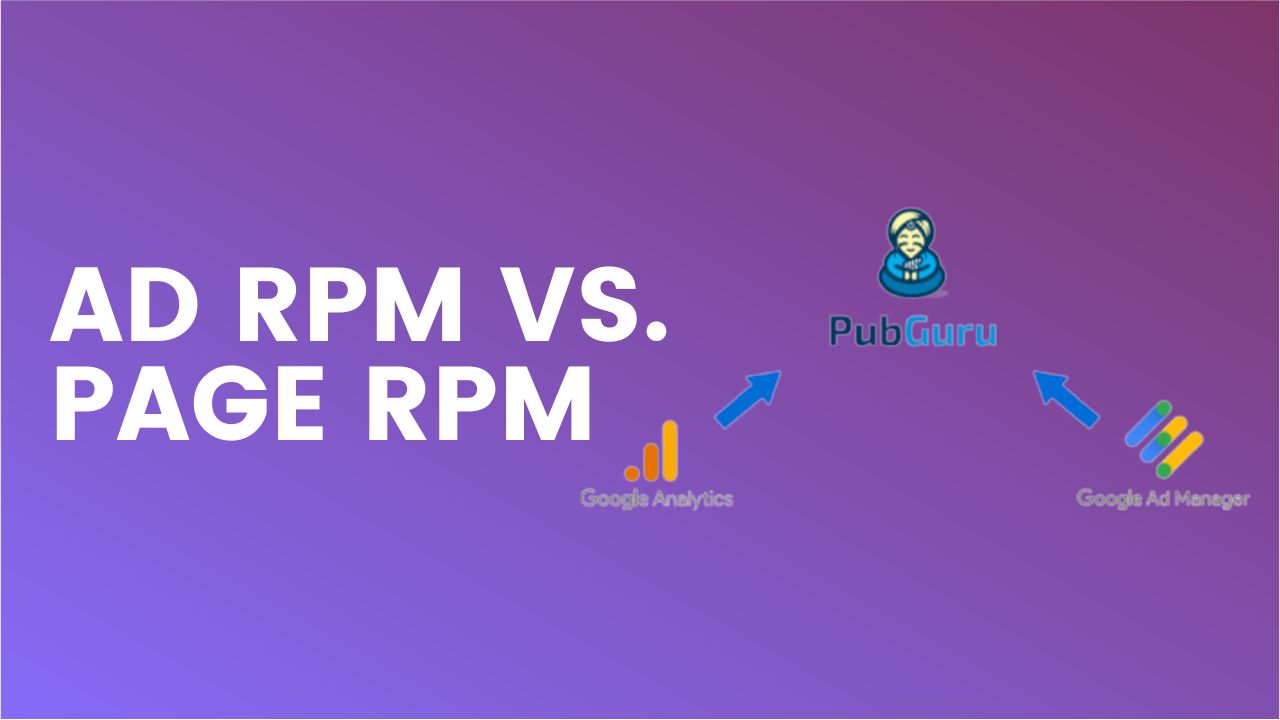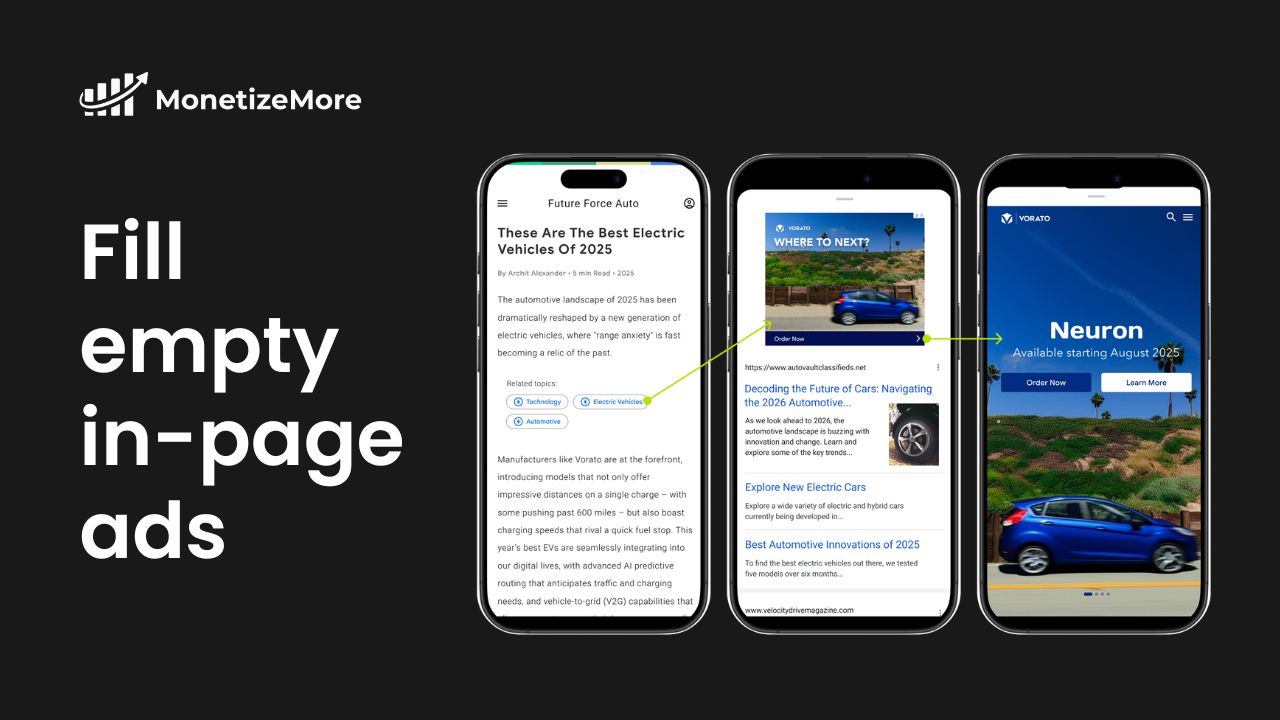
If you are looking for what differentiates Ad RPM vs. Page RPM, you have come to the right place. These are valuable metrics that publishers use to analyze their ad performance. However, often, publishers are confused and wonder which of these metrics should be their focus. Let’s first quickly determine how RPMs are calculated.
Ad RPM or the ad revenue per one thousand impressions, is calculated by dividing your estimated revenue by ad impressions and then multiplying by 1000. See formula below:
Ad RPM = (Estimated earnings / Ad impressions) * 1,000
Page RPM is the rate that the advertiser has to pay for every 1,000 ad impressions viewed per page. It is calculated by dividing your estimated revenue by the number of page views you received and then multiplying by 1,000.
Page RPM = ( Revenue / Number of page views) x 1,000
While these two metrics are quite similar, there is a substantial difference.
Ad RPM tells the publisher the cost that the advertiser will have to pay for every 1,000 ad impressions served on a website, while Page RPM metric helps publishers understand the performance of their ads on a page level.
Page RPM demonstrates the rate that publishers are paid for ad impressions on their web pages and allows them to identify low and high earning pages and strategize how to improve their performance. By using this metric, you can evaluate the performance of multiple pages on your website.
So, the next question is, what is a good RPM?
While this is an excellent question to ask, there is, unfortunately, no generic answer to this question. Several factors determine your page RPM. Here are some to keep in mind:
Several factors can impact Ad RPM (revenue per thousand ad impressions) and Page RPM (revenue per thousand pageviews) for publishers. Some of the key factors include:
These examples illustrate how Ad RPM and Page RPM can be used in practice to increase ad revenue for different industries. By understanding the above factors and optimizing accordingly, publishers can increase their revenue per pageview and ultimately grow their business.
One issue that we frequently see with publishers who haven’t optimized their ad stacks is that upon optimizing their ad stack, their page RPM increases while their ad RPM decreases. Why does this happen? One of the most common scenarios is that publishers with unoptimized systems often have substantial unfilled impressions.
Most ad reporting technologies, including Google Ad Manager, do not report these impressions as $0. Instead, they’re not counted at all. So if a publisher has a site with 70% fill at $0.40 ad RPM, we will frequently crank that up to 95%+ fill. If the additional filled impressions average less than $0.40 ad RPM, then the overall ad RPM will fall, even though the site is making more money overall. This is why although ad RPM is useful in ad optimization, it’s usually not a primary KPI for ad optimization.
In most cases, session RPM is the primary KPI for ad optimization. This is because some ad technologies can be so abusive that they reduce the average page views per session, reducing overall session RPM.

Page Report Tool: The tool has been recommended by hundreds of publishers who regularly track their Ad RPM and Page RPM.
The Page Report tool gives publishers detailed insights into their website’s ad performance. By tracking metrics like sessions, Ad RPM, Page RPM, impressions, and revenue, publishers can identify areas for improvement and optimize their ad operations for higher revenue.
Why you need to add this to your audit stack:
By providing comprehensive insights, a user-friendly interface, customizable reports, and actionable recommendations, the tool has already helped many publishers optimize their ad operations for higher revenue, and so can you!
Page RPM and Ad RPM form part of a publisher’s arsenal of metrics to analyze and optimize ad performance. While calculating and understanding these metrics might be easy, implementing the correct strategies to optimize your ad revenue is entirely different. Don’t leave it up to guesswork! Get ad optimization experts to optimize your ads and help you maximize your ad revenue. Sign up for a Starter account at MonetizeMore today!
Page RPM varies between publishers and depends on a variety of factors such as niche, traffic quality, demographics, traffic location, and more. However, it generally ranges between $0.05 - $50 and possibly more.
Page RPM = ( Revenue / Number of page views) x 1,000
There are many techniques to use to increase your RPMs. You could increase the competition within your ad stack by joining more ad networks, start running header bidding, and much more...
CPM is a metric used by advertisers to determine what their ad cost will be for 1000 impressions where RPM is used by publishers to determine the ad revenue they’ll earn per 1000 impressions.
RPM on AdSense is the estimated earnings and impressions that you could earn for every 1000 impressions received.

With over ten years at the forefront of programmatic advertising, Aleesha Jacob is a renowned Ad-Tech expert, blending innovative strategies with cutting-edge technology. Her insights have reshaped programmatic advertising, leading to groundbreaking campaigns and 10X ROI increases for publishers and global brands. She believes in setting new standards in dynamic ad targeting and optimization.



10X your ad revenue with our award-winning solutions.